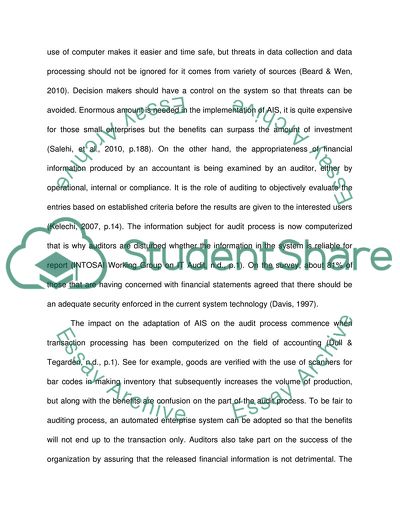Cite this document
(The Impact of Accounting Information System on the Audit Process Essay Example | Topics and Well Written Essays - 1500 words, n.d.)
The Impact of Accounting Information System on the Audit Process Essay Example | Topics and Well Written Essays - 1500 words. https://studentshare.org/finance-accounting/1568463-the-impact-of-accounting-information-system-on-the-audit-process
The Impact of Accounting Information System on the Audit Process Essay Example | Topics and Well Written Essays - 1500 words. https://studentshare.org/finance-accounting/1568463-the-impact-of-accounting-information-system-on-the-audit-process
(The Impact of Accounting Information System on the Audit Process Essay Example | Topics and Well Written Essays - 1500 Words)
The Impact of Accounting Information System on the Audit Process Essay Example | Topics and Well Written Essays - 1500 Words. https://studentshare.org/finance-accounting/1568463-the-impact-of-accounting-information-system-on-the-audit-process.
The Impact of Accounting Information System on the Audit Process Essay Example | Topics and Well Written Essays - 1500 Words. https://studentshare.org/finance-accounting/1568463-the-impact-of-accounting-information-system-on-the-audit-process.
“The Impact of Accounting Information System on the Audit Process Essay Example | Topics and Well Written Essays - 1500 Words”. https://studentshare.org/finance-accounting/1568463-the-impact-of-accounting-information-system-on-the-audit-process.


